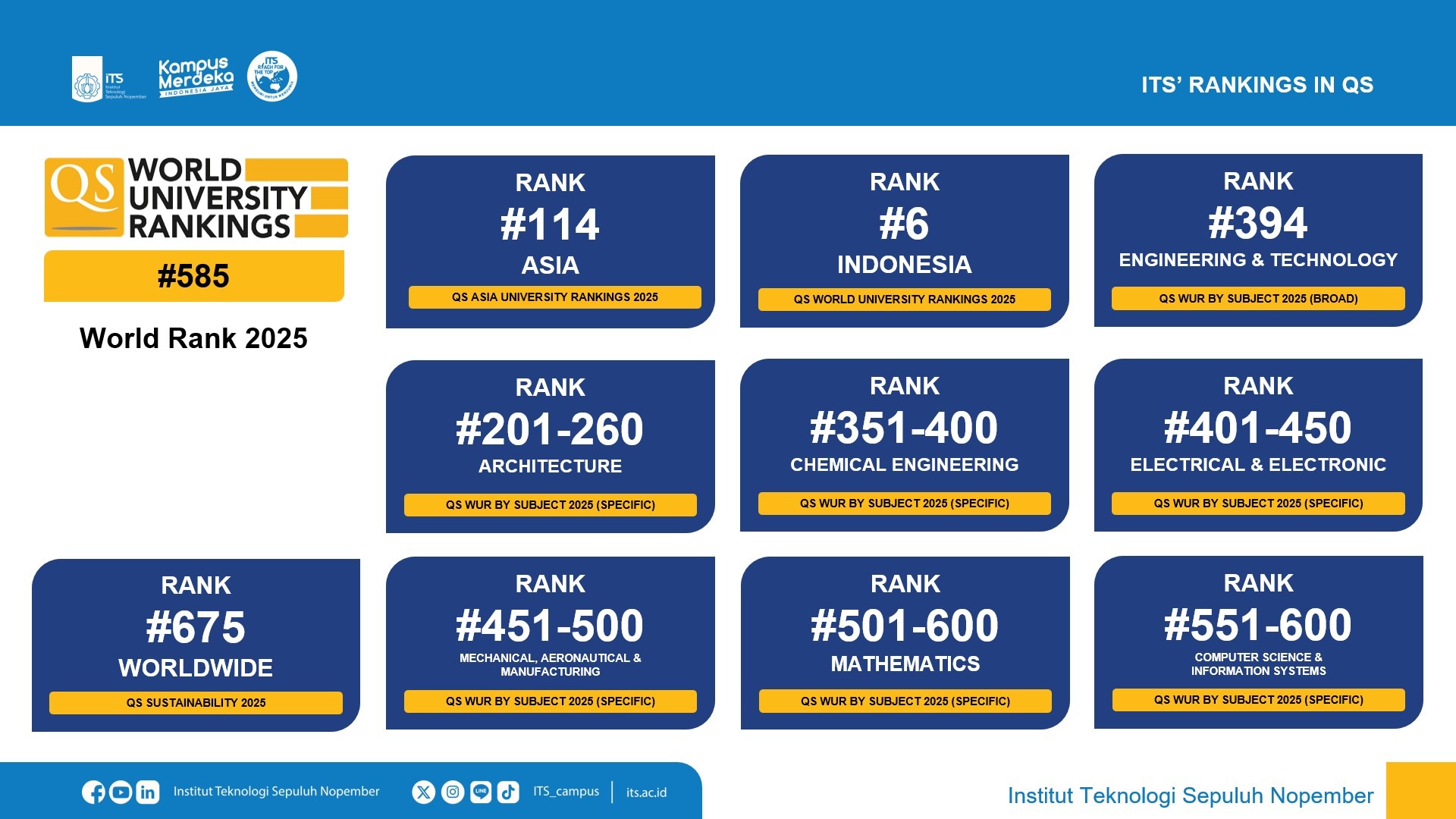QS World University Rankings by Subject ranks the world’s top universities in individual subject areas, covering 5 broad subject areas and 48 specific subject areas. The rankings aim to help prospective students identify the world’s leading schools in their chosen field in response to high demand for subject-level comparisons. In 2022, ITS is ranked in 4 specific subject areas: Chemical Engineering, Computer Science, Electrical Engineering, and Mechanical Engineering.
Each of the subject rankings is compiled using five sources. The first two of these are QS’ Global Surveys of Academics and Employers, which are used to assess institutions’ international reputation in each subject. The other three indicators assess research impact, based on research citations per paper, H-Index in the relevant subject, and International Research Network (IRN).
These five components are combined to produce the results for each of the (broad) subject rankings, with weightings adapted for each discipline (below is weighting for: Engineering and Technology):

